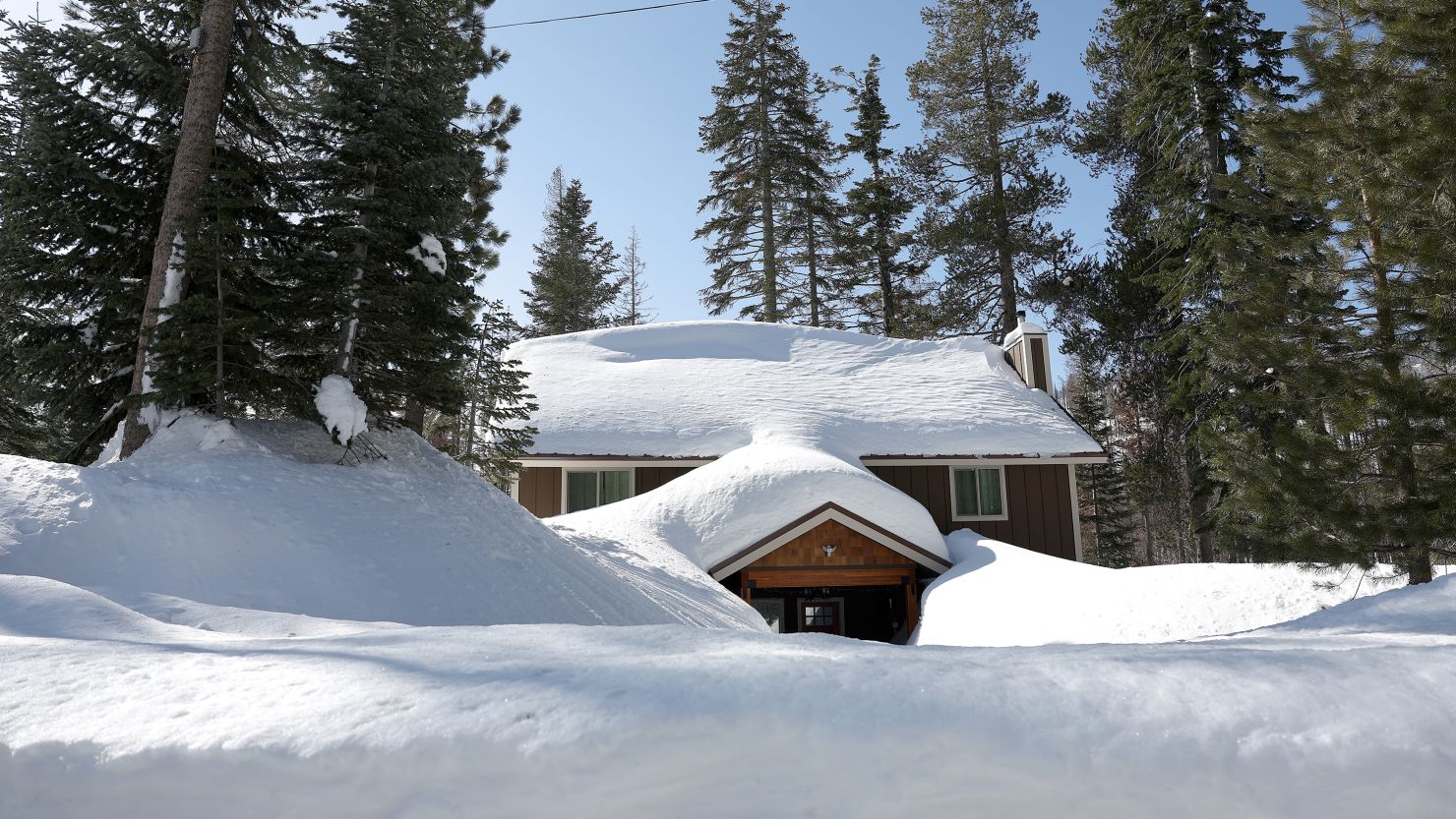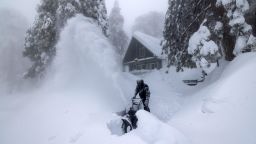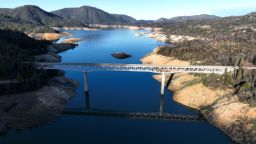After an incredible series of winter storms, California officials reported Friday the state’s snowpack is the largest in decades.
Snowpack in the California Sierra is 177% of normal for this time of year, officials at the Department of Water Resources said. Statewide, snowpack is averaging 190% compared to normal for the date — a significant boost after back-to-back storms.
Snowpack in the Sierra Nevada is critical because it acts as a natural reservoir and accounts for 30% of California’s freshwater supply in an average year. The recent record-breaking, three-week deluge helped replenish some of the state’s reservoirs, but Shasta Lake — the largest in the state — remains below its historical average.
The most recent winter storms brought unusually heavy snows to the mountains and snowfall reaching rarely seen low elevations over the past week.
“This snowpack actually rivals 1982-1983, which is the largest snowpack on record,” said Sean de Guzman, snow survey manager for the state Department of Water Resources.
In its manual survey at Phillips Station off Highway 50 near Lake Tahoe — generally held the first of each month between January and May — officials measured a snow depth of 116.5 inches and a snow water equivalent of 41.5 inches. It is already 170% of what they typically expect to see by April 1 at the location, when snowpack generally reaches its peak, according to the Department of Water Resources.
“After a monthslong dry spell, during February, this last week brought a significant amount of rain and snow, especially in the central Sierra,” said de Guzman.
For the first time in nearly three years, only 49% of the state of California remains in a drought, according to the latest US Drought Monitor released Thursday morning.
Only a year ago, the entire state was 100% in a drought due to a dire lack of precipitation and higher evaporation rates from increasingly warmer temperatures. This year, series of winter storms over the past week “dropped copious amounts of rain and snow across the West, especially over the Sierra and coastal ranges and Rocky Mountains,” the Drought Monitor noted.
While the heavy rains caused widespread flash flooding and several feet of snow trapped residents in their homes in the higher elevations, the “rain has improved California soil moisture and streamflow levels, while the snow has increased mountain snowpack to much above-normal levels,” according to the Drought Monitor.
In central California’s Sierra Nevada region, both the mountains and foothills are now “free of drought and abnormal dryness for the first time since January 2020,” it added.
Still, the state faces an acute groundwater shortage. Experts have previously told CNN it will ultimately take many wet winters for California and the rest of the West to recover from what scientists have said is a long-term drying trend.
“Most California reservoirs have refilled with water levels near or above average, but groundwater levels remain low and may take months to recover,” the summary said, indicating the water crisis facing the state is not over.
Department of Water Resources officials cautioned while it is good news for the state, there is still one more month to go until April 1, which is the survey date considered most important to forecast the year’s water resources. Such data, including additional snow measurements from 260 other sites throughout the state, help water managers plan for the rest of the year.







